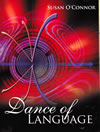Thinking
 Do we think in pictures or words? Many say pictures, but the answer is unclear, according to a number of scholars,
including analysts who engage in dream work. While recording dreams, analysands report specific conversations or
verbal responses in their dreams. At times all of us rehearse and even invent mentally what we are going to say aloud or in writing.
What educators do know is that it is impossible to engage in reading, writing, listening, speaking, and responding to visual stimuli
without thinking. It is the foundation of every tool we use to construct language in any form.
Learning how to channel thinking for critical and creative purposes fosters greater success in every area of our lives.
Do we think in pictures or words? Many say pictures, but the answer is unclear, according to a number of scholars,
including analysts who engage in dream work. While recording dreams, analysands report specific conversations or
verbal responses in their dreams. At times all of us rehearse and even invent mentally what we are going to say aloud or in writing.
What educators do know is that it is impossible to engage in reading, writing, listening, speaking, and responding to visual stimuli
without thinking. It is the foundation of every tool we use to construct language in any form.
Learning how to channel thinking for critical and creative purposes fosters greater success in every area of our lives.
In the 1950s psychologist Joy Paul Guilford developed the concepts of convergent and divergent thinking styles. Convergent thinking involves combining ideas together that have similar elements in order to arrive at a “correct” answer. Divergent thinking, also known as thinking outside the box, allows the mind to think outwards, freely associating ideas and looking at an idea or problem from several different perspectives, not one right answer. Convergent thinking prepares students to gain and organize information for a purpose, and divergent thinking encourages creativity and originality, the development of new information and ideas. Both thinking styles are necessary and actually work together to help learn and solve problems. Both work side by side to think critically and creatively.
Divergent Thinking
The skill of looking at an idea or situation in a new way to find greater opportunities for solutions benefits learners throughout every stage of life. Try the following thinking strategies:
- Brainstorming with another person or even by yourself to generate as many ideas or words on the particular concept on which you are focusing. In writing, word banks create a helpful resource.
- Free writing in a journal accomplishes several services. First, it acts as a record of events and thoughts and allows the writer to see them clearly and take action. Second, words produce more words which produce more thoughts you might not have even realized you had. How do I know what I think until I see what I say?
- Practice with brainteasers and all kinds of puzzles, especially crosswords puzzles, and similar critical thinking activities.
- Practice looking at a situation from several perspectives. Don’t stop at just the one that naturally comes to you.
- Read the classics. Literature from another time period will definitely afford a new perspective. Things change over time and we forget the specific culture of the past.
- Learn about different cultures and sample what you learn: food, customs, holidays.
- Watch films based on classic literature, historical fiction, cultural settings, foreign films.
- Try a new hobby. Learn a new sport, a musical instrument, a dance, an art medium, a game, a foreign language.
- Change your routine: the route you take, the sequence of your activities, the time you normally do these activities.
- Make friends with new people, older or younger, and open your mind to their perspective.
- Go for a walk in the woods and look under rocks and logs, in a pond or stream. Then sit for a while and watch and listen. Interesting new things will happen just because you were there sitting still and waiting patiently.
- Visit a zoo or wildlife park. Get a pet. Learn from and about animals and the effect they have on humanity.
- Look in your closet and find numerous new outfits just by thinking outside the box. Girls will think this is fun..
- Plan a short vacation with a friend or group of friends—possibly a day trip—on a shoestring budget. Think creatively of all the activities you could do free or for very little money.
- Engage in positive thinking. Believing you can do something is usually the first step in solving a problem or creating something new.
Convergent Thinking
 The concept of divergent thinking in Greek thought, as expressed by philosophers like Plato did not exist.
Most ancient cultures lacked the concept of creativity. Even the term for poetry, poiesis, meaning that which is made,
was rejected by Plato as a form of creation. It was merely an imitation, a form of discovery. Before the Renaissance,
people believed that art came about as inspiration from God, just as the Greeks had relied on the Muses.
Creativity was not of mankind’s own doing until the Renaissance at which time the consensus was art was created by great men.
Convergent thought follows a particular set of steps in logical thinking in order to arrive at a single best possible answer,
an approach found in most subjects in school. After looking at a body of information, especially in science or math, students are expected
to draw a conclusion and give an accepted right answer instead of a number of creative solutions. In research and in writing,
students bring together related ideas and form outlines from which they will write papers. They have been practicing convergent thinking
for years in the classroom but also watching this style of thinking in the numerous detective,
crime scene investigation, and mystery programs available on television every night of the week.
The concept of divergent thinking in Greek thought, as expressed by philosophers like Plato did not exist.
Most ancient cultures lacked the concept of creativity. Even the term for poetry, poiesis, meaning that which is made,
was rejected by Plato as a form of creation. It was merely an imitation, a form of discovery. Before the Renaissance,
people believed that art came about as inspiration from God, just as the Greeks had relied on the Muses.
Creativity was not of mankind’s own doing until the Renaissance at which time the consensus was art was created by great men.
Convergent thought follows a particular set of steps in logical thinking in order to arrive at a single best possible answer,
an approach found in most subjects in school. After looking at a body of information, especially in science or math, students are expected
to draw a conclusion and give an accepted right answer instead of a number of creative solutions. In research and in writing,
students bring together related ideas and form outlines from which they will write papers. They have been practicing convergent thinking
for years in the classroom but also watching this style of thinking in the numerous detective,
crime scene investigation, and mystery programs available on television every night of the week.
